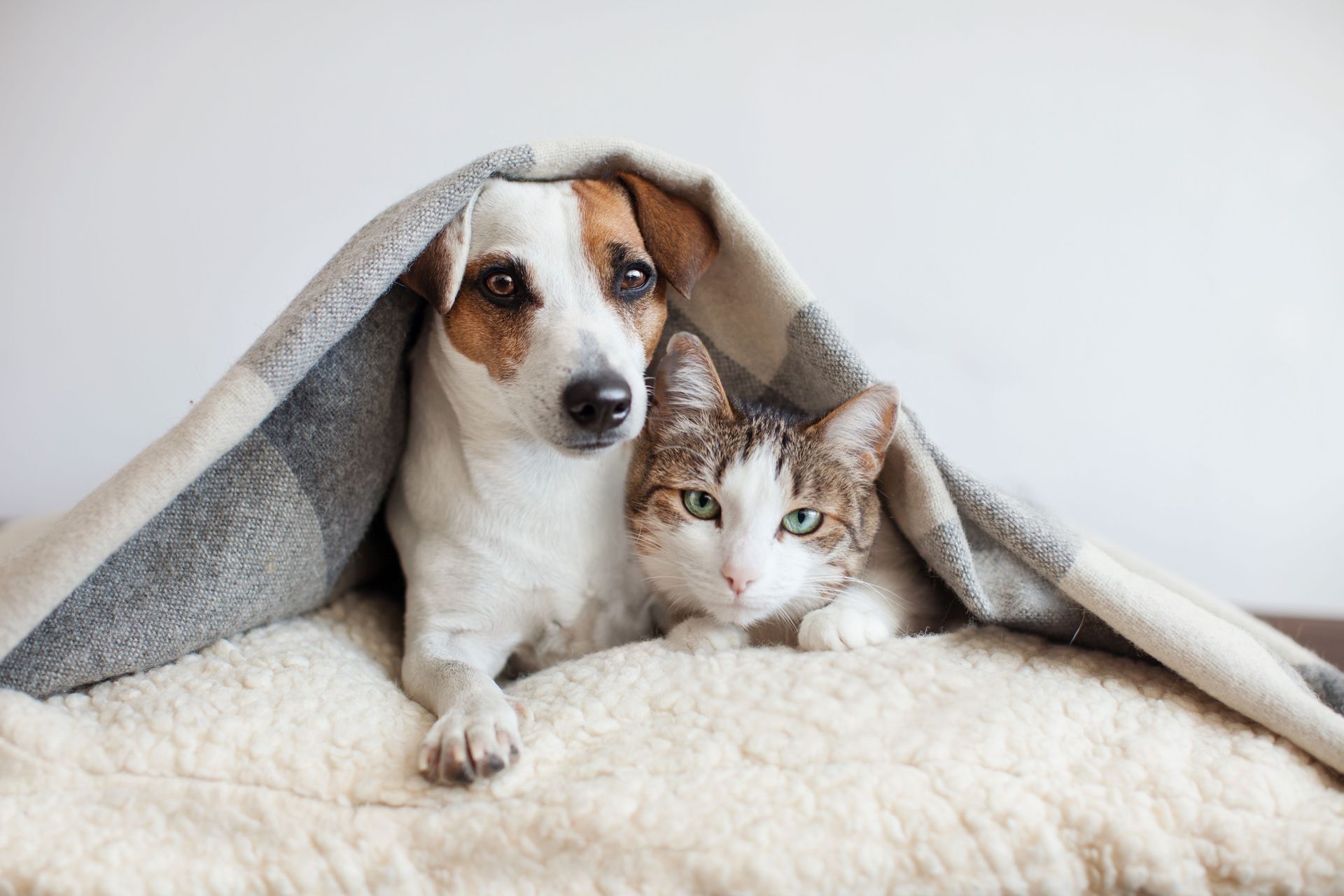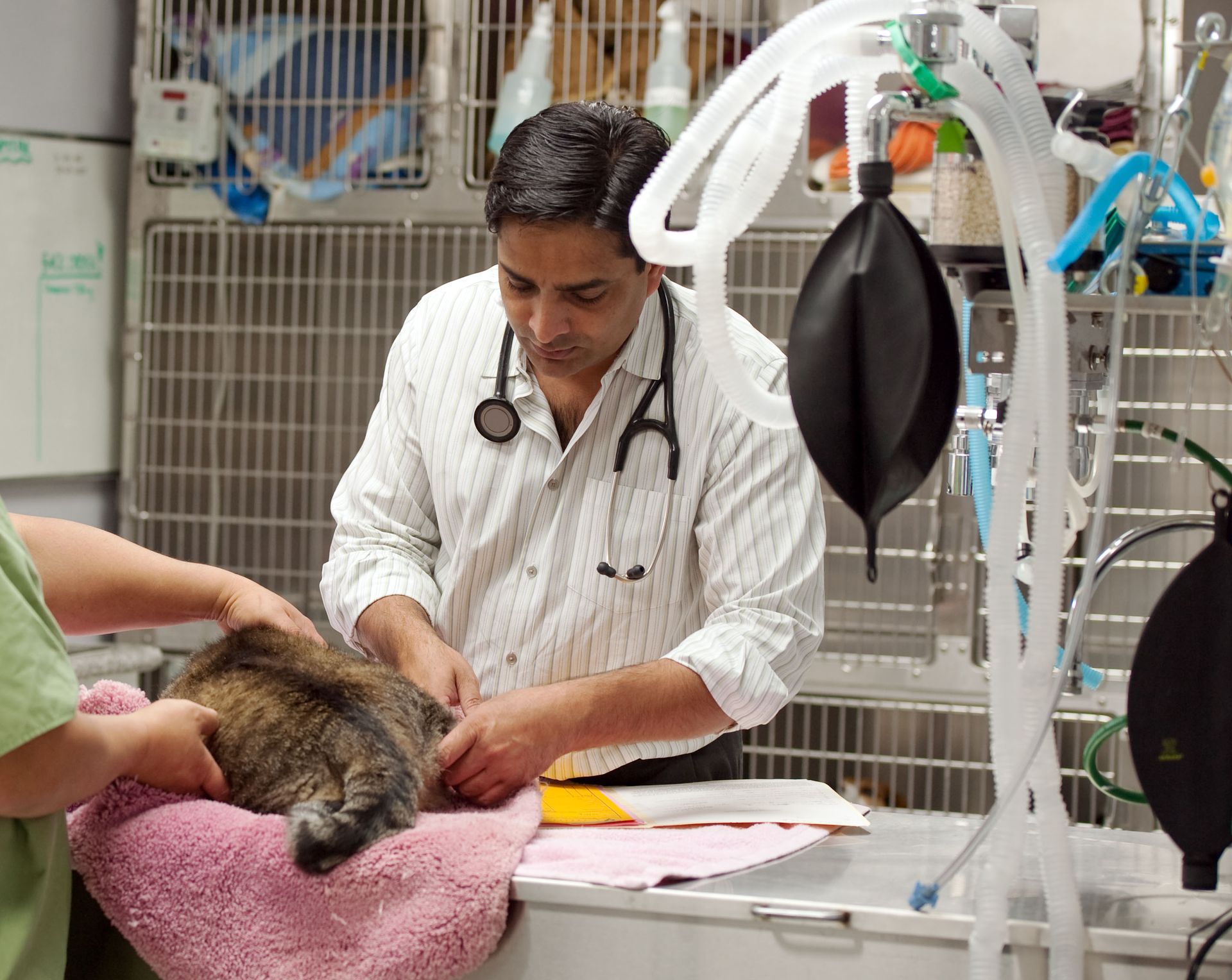3 Factors Driving Veterinary Workers' Compensation Costs
July 1, 2025
July 1, 2025
Workers’ compensation insurance is a necessary cost. Many practice leaders assume this cost is fixed, but several factors can influence rates that could be quietly eating into the clinic’s bottom line.
Three behind-the-scenes factors can significantly increase your workers’ comp insurance costs, resulting in over-payments of up to $20,000 per year. Let’s break down how claims, overtime, and 1099 contractors impact veterinary workers’ compensation and how partnering with VSS can help you avoid these pitfalls.
1. Injury claims
Your veterinary workers’ compensation premium is based on payroll and claims history. Insurers use something called an experience modification rate (EMR) to measure the riskiness of your business compared to others in the same industry.
Injuries often occur among team members who are overtired or overextended. Relief staffing from VSS can ensure your core team gets the breaks they need to stay safe and can help to limit workers’ comp premiums.
2. Overtime
Overtime is a short-term solution that may have long-term costs. Veterinary workers' compensation premiums are partially based on total payroll, including overtime. Every extra hour of time-and-a-half increases insurable payroll and, therefore, premiums.
Additionally, overtime contributes to fatigue, which leads to mistakes and injuries. Tired employees are more likely to slip, lift incorrectly, or miss signs that a pet is about to bite. If your staff is overextended, it may be time to consider a relief coverage strategy.
3. 1099 contractors
Relief team members can provide regular team members the help they need to reduce burnout and limit workers’ comp claims, but hiring them as 1099 contractors can create other issues. Misclassifying these workers can increase your veterinary workers' compensation costs.
A 1099 contractor is responsible for their own taxes and insurance, including workers’ compensation. But if that person functions like an employee—they follow your schedule, use your equipment, and work under your supervision—then they likely meet the legal definition of an employee.
This gets confusing, and if something goes wrong, your practice could be held liable. When a relief worker without private workers’ comp insurance gets injured on the job, you could face:
Three behind-the-scenes factors can significantly increase your workers’ comp insurance costs, resulting in over-payments of up to $20,000 per year. Let’s break down how claims, overtime, and 1099 contractors impact veterinary workers’ compensation and how partnering with VSS can help you avoid these pitfalls.
1. Injury claims
Veterinary medicine is physically demanding. Team members lift heavy patients, crawl on the floor, and handle anxious or fearful pets who are armed with teeth and claws. Working long hours in these conditions increases the likelihood of injuries. However, one workers’ compensation claim can increase insurance costs.
Every practice starts with an EMR of 1.0, which represents the industry average. If you’ve had fewer injuries or claims than expected, your EMR falls below 1.0, and your premiums go down. If you’ve had more claims than average, your EMR rises above 1.0, and your premiums go up.
For example, if your EMR is 1.10, that means you’re paying 10% more for workers’ comp insurance than a similar clinic with fewer claims. That doesn’t seem like much, but it can add up. Depending on your state, a base premium may run $5,000 to $10,000 for every $100,000 of payroll. If your practice has $1 million in payroll, a 10% increase due to injury claims can add $5,000 to $10,000 every year.
2. Overtime
Overtime is a short-term solution that may have long-term costs. Veterinary workers' compensation premiums are partially based on total payroll, including overtime. Every extra hour of time-and-a-half increases insurable payroll and, therefore, premiums.
Additionally, overtime contributes to fatigue, which leads to mistakes and injuries. Tired employees are more likely to slip, lift incorrectly, or miss signs that a pet is about to bite. If your staff is overextended, it may be time to consider a relief coverage strategy.
3. 1099 contractors
Relief team members can provide regular team members the help they need to reduce burnout and limit workers’ comp claims, but hiring them as 1099 contractors can create other issues. Misclassifying these workers can increase your veterinary workers' compensation costs.
A 1099 contractor is responsible for their own taxes and insurance, including workers’ compensation. But if that person functions like an employee—they follow your schedule, use your equipment, and work under your supervision—then they likely meet the legal definition of an employee.
This gets confusing, and if something goes wrong, your practice could be held liable. When a relief worker without private workers’ comp insurance gets injured on the job, you could face:
- A claim against your policy or a lawsuit for damages
- A payroll review that triggers retroactive premium charges
- Fines or penalties from your state labor board or tax authorities
Relief staffing the right way
Workers’ compensation protects your business, but you could be paying significantly more than necessary if you make mistakes classifying employees, have team members regularly working overtime, or fail to address safety issues that lead to injuries and claims.
Relief staffing—done the right way—can be a game-changer for busy veterinary practices. When you work with a staffing service like VSS, team members are employees of the service, not your hospital. That means you’re off the hook for veterinary workers’ comp coverage, legal risk, and misclassification.
Contact us to find out how our relief professionals and additional business support services, including medical-grade laundry and inventory consulting, can help you save money and thrive in the veterinary space.


August 19, 2025
Veterinary technicians spend years in intensive training programs to become credentialed professionals. They entered the veterinary field to save lives, provide advanced nursing care, and make a difference for pets and their people. But, in practice, m any credentialed technicians are inappropriately utilized and spend their shifts cleaning kennels and washing, drying, and folding the never-ending pile of veterinary practice laundry. Surely, your team members did not sign up to be licensed laundry professionals. Although every job requires some cleaning, as the facility must remain clean and tidy to minimize disease spread, that shouldn’t be your techs’ main job. Laundry is a necessary evil, but what if you could reclaim that time? Here are five reasons why outsourcing your laundry with Veterinary System Services could be your practice's best decision this year. 1. Harness your team’s talents Credentialed veterinary technicians (CrVTs) are highly trained professionals with advanced nursing skills and invaluable experience. They undergo a rigorous education alongside veterinary students, and that deserves respect. Your CrVTs probably excel at cleaning, too, but that doesn’t mean it's a good use of their talents. Outsourcing your veterinary practice laundry frees up techs to do what they do best—provide excellent care to patients and clients. Your technicians can contribute to the practice’s financial health in other, far more productive ways, such as assisting in surgery, educating clients, tending to hospitalized patients, or keeping the veterinarian’s schedule moving. Plus, technicians who are utilized to the fullest extent of their licensed skills have more job satisfaction. 2. Save time and boost practice efficiency Laundry—which can seem never-ending—is time-consuming for team members, as they load, fold, sort, and restock. Consider what your practice could accomplish if laundry were taken off everyone’s plate—not only your veterinary technicians. Your staff could redirect their energy toward seeing more patients or providing better care. Outsourcing laundry improves overall practice efficiency and ensures you never run out of towels for wrapping patients or surgical gowns for that last-minute emergency procedure. 3. Eliminate hidden costs Doing your own laundry seems like a reasonable solution to help keep operational costs down—your team is already in the building, so they might as well throw in a load of laundry, right? However, doing it yourself has hidden costs: Water and electricity — Constant washing and drying can spike your utility bills. Maintenance — Frequently used washers and dryers need expensive routine repair or replacement. Productivity loss — The time your team spends doing laundry doesn’t generate revenue, while direct patient care does. Outsourcing your veterinary practice laundry is likely more cost-effective in the long run. Pricing is a predictable monthly fee with no surprises related to repairs or leaks. 4. Improve veterinary practice cleanliness Cleanliness in a veterinary practice is about aesthetics and safety. Clients judge a hospital by looks and smells, and maintaining high cleanliness standards protects pets and the community from infectious diseases. However, achieving hospital-grade cleanliness with in-house laundry might take more work than you think. Leaving your veterinary practice laundry to the professionals ensures that your linens meet the highest hygiene standards. Professional equipment, detergents, and disinfectants, plus procedures to reduce cross-contamination, provide a total sanitary environment. 5. Boost morale and retention Your team, especially CrVTs, may feel undervalued when they spend their time and talents on tasks that don’t align with their training and education. Overburdening technicians with non-clinical duties like laundry can lead to burnout and turnover. However, using an outside service for your veterinary practice laundry shows your team you respect their time and credentials, improving team morale and retaining top talent in your clinic. Outsourcing laundry isn’t only about convenience or cost. Using the Veterinary System Services laundry program prioritizes what truly matters—delivering exceptional care and creating a respectful work environment where all your team members can thrive. Contact us to learn more about professional laundry services and give your team the break they deserve!

August 12, 2025
In the bustling world of veterinary practices, where compassion for pets meets the demands of business, one often overlooked aspect is the true cost of employee overtime. It's a topic frequently brushed aside or oversimplified, with many believing the additional hourly wages are the sole expense incurred. However, delving deeper reveals a complex web of hidden costs that can significantly affect a practice’s bottom line and the well-being of its staff and patients. The fallacy of hourly rates in veterinary medicine When questioned about how much a specific employee earns or “costs” the business, veterinary practice managers or owners frequently respond with something along the lines of, "Their hourly rate is $25, so they cost me $25 an hour.” But that view fails to capture the full picture. Beyond the question of base wages lies a myriad of additional expenses—from taxes and benefits to training and turnover—all of which contribute to the true cost of an employee. Understanding the true cost of veterinary employees To understand the real cost of a veterinary team member, you must consider the following factors: Overtime premiums — Overtime isn't only a matter of paying the base wage for extra hours. Federal and state laws often mandate overtime premiums, which can be as much as 1.5 times the regular rate. This additional expense can quickly add up, especially in practices where overtime is common. Burnout and diminished productivity — While it may seem easier to rely on overtime hours to meet business demands instead of seeking additional help, the long-term effects on employees can include burnout, fatigue, and decreased morale, which can lead to decreased productivity, increased errors, and higher turnover rates, not to mention serious mental health effects for your team members. Training and onboarding — Every new employee represents an investment in training and onboarding. When existing staff are stretched thin with overtime, the time and resources available for training diminish, potentially compromising the quality of care and increasing the likelihood of mistakes. Health care costs — Overtime doesn’t only tax the mind; it can also take a toll on physical health. Increased stress, irregular schedules, and inadequate rest can contribute to a host of health issues, ultimately driving up healthcare costs for employees and employers. Turnover and recruitment — The veterinary industry is no stranger to turnover, but excessive overtime can exacerbate the problem. Employees who feel overworked and undervalued are more likely to seek opportunities elsewhere, leading to increased recruitment and onboarding costs for a practice. Confronting the truth about overtime for veterinary professionals It's easy to fall into the trap of believing that overtime is a cost-effective solution to staffing shortages. However, as veterinary professionals, we must confront reality head-on and acknowledge the true burden of overtime. This means taking the time to calculate the full cost of employee hours, including direct and indirect expenses, and weighing them against the benefits of a well-rested, motivated workforce. How to manage the true costs of overtime What can veterinary practice managers do to mitigate the hidden costs of overtime? Here are a few strategies to consider: Evaluate workload and staffing levels — Take a critical look at workload distribution and staffing levels to identify areas of inefficiency or over-reliance on overtime. Invest in staff development — Make training and professional development opportunities a priority to ensure employees have the skills and support they need to thrive. Implement flexible scheduling — Explore alternatives to traditional scheduling models, such as flexible hours or compressed workweeks, to accommodate fluctuating demand without resorting to excessive overtime. Promote work-life balance — Encourage a culture of work-life balance by offering benefits such as paid time off, wellness programs, and employee assistance services. Communicate transparently — Foster open communication with staff about workload expectations, overtime policies, and the importance of self-care. In the fast-paced world of veterinary medicine, the true cost of employee overtime can often be overshadowed by immediate staffing needs and budget constraints. However, by taking a holistic view of employee expenses and acknowledging the hidden costs of overtime, practice managers can make more informed decisions that balance both financial sustainability and employee wellbeing. To discuss how overtime can wrack up considerable costs you may not realize, give our Veterinary System Services team a call. We’ll guide you through the pros and cons of bringing relief staff on board and provide a cost comparison in terms of finances, patient and client care, and employee wellbeing.

August 5, 2025
Veterinary inventory isn’t flashy or exciting for most veterinary professionals, and when it’s going well, the team is unlikely to think about it. However, when inventory systems don’t work, the entire clinic suffers. Stockouts frustrate team members, overstocking wastes money and space, and inventory managers become easily overwhelmed. If this sounds like your veterinary hospital, an overhaul of your inventory systems could help you get back on track. Veterinary System Services offers inventory consulting that transforms clinics and relieves stress on overworked team members. To illustrate how a few key changes can lead to significant improvements in cost control, space usage, and staff morale, here is the story of a clinic in Lone Tree, Colorado, that partnered with VSS to overcome its inventory challenges. The problem Clinic leadership contacted the VSS inventory consulting team after hiring a new team member who had previously used our service. Like many hospitals, their approach to veterinary inventory management wasn’t working for them. The practice spent more than 23% of its revenue on the cost of goods sold (COGS). The practice owner, Dr. Smith, wanted to see this number come down and had tried some tips they had heard about, with no success. Inventory management fell to Sara, a senior technician. Sara preferred working with patients, but she was reluctantly saddled with inventory responsibilities. For her, the job was thankless, and it clearly caused her mental distress. The team was constantly frustrated about stockouts, and Dr. Smith was unhappy with spending. Although they had plenty of storage space, including an entire basement food room, they never seemed to have what they needed. The solution After evaluating the practice’s veterinary inventory management systems, our recommendations included: Conducting a complete count of existing stock Using practice management software to track inventory Setting reorder points based on actual usage Transitioning food sales to an online platform Discontinuing retail extras, such as leashes, toys, and collars Some of the associate veterinarians were reluctant to give up in-house food sales, and Dr. Smith was concerned about losing revenue from retail items. Jane, the practice manager, worried about the disruption to business that a full inventory count would cause. It took some time, but the team overcame these hesitations and made the recommended changes. The results A year after our consultation with the Colorado clinic, we checked in on their progress. On arrival, we were greeted with Sara’s smile; she looked like an entirely different person with a weight lifted from her shoulders. She told us that costs were down, stockouts now rarely occurred, and that she finally got to spend more time with patients and less time putting out inventory fires. During a tour of the hospital, we saw that the retail section had been reduced to a few handmade specialty items that clients couldn’t get elsewhere, and most of the space was dedicated to a streamlined display of prescription diet starter bags. A new controlled substances cabinet, the first in a planned series of organizational solutions, was in place. As recommended, the hospital moved food sales online, which freed up the basement food storage room for a cat boarding area that generated monthly revenue. The team streamlined inventory so much that one of the stock closets had been transformed into a new exam room, creating further revenue opportunities. Overall, the practice decreased COGS by nearly 10 percentage points, an impressive feat for any hospital. Lessons learned Changes to veterinary inventory can be difficult to implement. Teams get stuck in inefficient patterns and feel too overwhelmed to institute change. But this real-life story is proof that impactful change is possible, and it doesn’t have to disrupt operations or tax already overworked team members. The changes this clinic made allowed a reluctant inventory manager to offload some of her duties and return to what she loved: caring for patients. Plus, the practice became more profitable, more efficient, and a better place to work. Contact us to learn more about VSS inventory consulting , medical-grade laundry , relief staffing, and placement services that help veterinary practices spend less and stress less.

